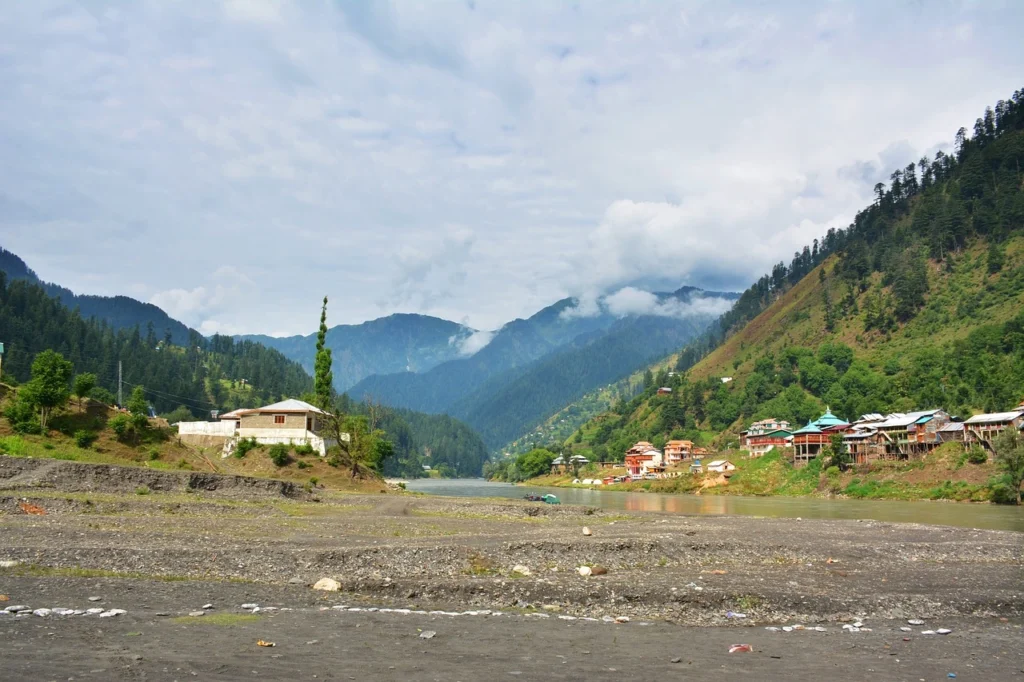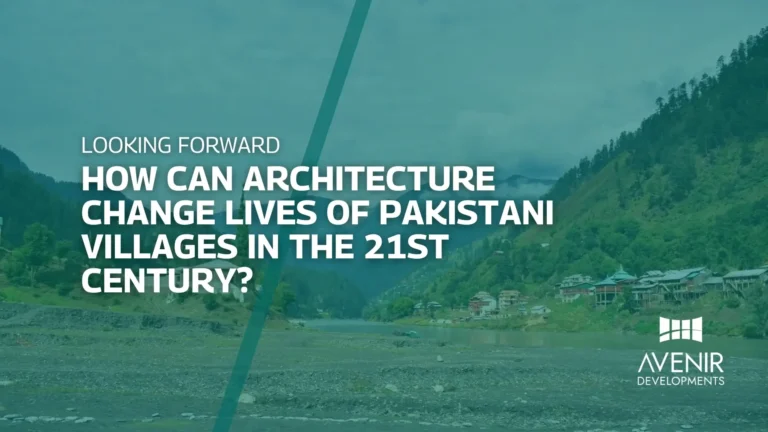Can architecture change lives? Absolutely! It’s not just about creating beautiful spaces; it’s about improving quality of life. I’ve seen firsthand how well-designed architecture can transform communities, and I believe it has the power to revolutionize the lives of people in Pakistani villages.
Let me share a personal story from my travels. During a visit to a remote village in the Himalayas, I was struck by the stark contrast between the rugged beauty of the landscape and the simple, often inadequate living conditions of the villagers. The lack of proper housing, sanitation, and infrastructure was evident. It was then that I realized the profound impact that architecture could have on these communities.
In this article, we’ll explore how architecture can be a catalyst for positive change in Pakistani villages. We’ll discuss the importance of sustainable design, community engagement, and government support in creating thriving and resilient communities.
Can Architecture Change Lives
Architecture is more than just bricks and mortar; it’s a powerful tool for shaping our environment and improving our lives. It has the potential to enhance our health, well-being, and overall quality of life.
Key Elements of Transformative Architecture:
- Sustainable Design: Incorporating sustainable practices like energy efficiency, water conservation, and use of local materials can reduce the environmental impact of construction and provide long-term benefits to communities.
- Community Engagement: Involving local communities in the design and planning process ensures that the architecture meets their specific needs and aspirations.
- Accessibility: Designing buildings and spaces that are accessible to people of all abilities promotes inclusivity and social justice.
- Affordability: Creating affordable housing solutions is essential for ensuring that everyone has access to safe and decent living conditions.
Historical Context and Evolution of Architecture in Pakistan:
Pakistan has a rich architectural heritage, with influences from various cultures and civilizations. From the ancient ruins of the Indus Valley Civilization to the Mughal architectural marvels, the country has a long history of innovative and beautiful design.
In recent years, there has been a growing emphasis on modern architecture and sustainable design in Pakistan. This shift is driven by the need for more efficient and environmentally friendly buildings, as well as the desire to create a distinctive identity for the country.
Importance of Architecture in Village Development:
Architecture plays a crucial role in the development of villages. It can improve the physical infrastructure, enhance the quality of life, and stimulate economic growth. By creating well-designed and functional buildings, villages can become more attractive places to live, work, and visit.

Current Trends and Developments in Architecture for Villages
In recent years, there has been a surge of innovative approaches to architecture that are specifically tailored to the needs of rural communities in Pakistan. These developments are driven by a combination of factors, including advancements in technology, increased awareness of sustainable design, and a growing emphasis on community empowerment.
Sustainable Design and Off-Grid Solutions:
One of the most significant trends in village architecture is the integration of sustainable design principles. This includes the use of renewable energy sources, such as solar and wind power, to reduce reliance on traditional grid-connected electricity. Off-grid solutions are particularly important in rural areas where access to the grid can be limited or non-existent.
Community-Based Architecture:
Another emerging trend is community-based architecture, which involves local communities in the design and construction process. This approach empowers villagers to take ownership of their built environment and ensures that the architecture meets their specific needs and preferences.
Innovative Building Materials and Techniques:
Advances in technology have led to the development of innovative building materials and techniques that are suitable for rural areas. These include rammed earth construction, bamboo architecture, and the use of recycled materials. These materials are often more affordable and sustainable than traditional construction methods.
Government Initiatives and Support:
The Pakistani government has recognized the importance of architecture in rural development and has launched several initiatives to promote sustainable and affordable housing. These initiatives include providing subsidies for construction materials, offering technical assistance to villagers, and encouraging the development of community-based housing projects.
Challenges and Opportunities:
Despite these positive developments, there are still significant challenges to overcome in the field of village architecture in Pakistan. These challenges include limited access to resources, lack of skilled labor, and the need to address the specific needs of vulnerable populations, such as women, children, and the elderly.
However, these challenges also present opportunities for innovation and collaboration. By working together, architects, policymakers, and community leaders can develop solutions that are both sustainable and equitable.
Frequently Asked Questions About Architecture and Village Development
Q: What are the benefits of sustainable architecture for villages?
A: Sustainable architecture offers numerous benefits for villages, including:
- Reduced environmental impact: By using renewable energy sources, conserving water, and minimizing waste, sustainable architecture helps to protect the environment and preserve natural resources.
- Improved energy efficiency: Sustainable buildings are designed to be more energy efficient, reducing energy costs and dependence on fossil fuels.
- Enhanced health and well-being: Sustainable architecture can improve indoor air quality, natural lighting, and ventilation, leading to better health outcomes for residents.
- Increased resilience: Sustainable buildings are often more resilient to natural disasters, such as floods, earthquakes, and extreme weather events.
Q: How can community engagement be incorporated into the design and construction process?
A: Community engagement can be incorporated into the design and construction process through:
- Community workshops and meetings: Organizing workshops and meetings to gather input from villagers on their needs and preferences.
- Community-based design teams: Involving local people in design teams to ensure that the architecture reflects the community’s identity and values.
- Participatory budgeting: Allowing communities to have a say in how resources are allocated for development projects.
Q: What are some innovative building materials that can be used in village construction?
A: Some innovative building materials that can be used in village construction include:
- Rammed earth: This technique involves compressing layers of earth into forms to create walls.
- Bamboo: Bamboo is a sustainable and versatile material that can be used for walls, roofs, and flooring.
- Recycled materials: Recycled materials, such as plastic bottles and waste tires, can be used to create building components.
- Locally sourced materials: Using locally sourced materials can reduce transportation costs and support the local economy.
Q: How can the government support the development of sustainable architecture in villages?
A: The government can support the development of sustainable architecture in villages through:
- Providing financial incentives: Offering subsidies or loans for sustainable construction projects.
- Developing building codes and standards: Implementing building codes and standards that promote sustainable design.
- Training and capacity building: Providing training and capacity building programs for architects, builders, and community members.
- Supporting research and development: Investing in research and development to develop new sustainable technologies and materials.
Q: What are the challenges and opportunities for women in village architecture?
A: Women face unique challenges and opportunities in the field of village architecture. Challenges include:
- Limited access to education and training: Many women lack the necessary education and training to participate in the field of architecture.
- Gender discrimination: Women may face discrimination in the workplace and may be excluded from decision-making processes.
- Limited access to resources: Women may have limited access to financial resources and support networks.
Opportunities for women in village architecture include:
- Empowerment through participation: Participating in community-based architecture projects can empower women and give them a voice in their communities.
- Economic opportunities: Women can create economic opportunities for themselves and their families by working in the field of architecture.
- Leadership roles: Women can take on leadership roles in community-based organizations and advocate for sustainable development.
Expert Tips and Advice for Village Architecture
Based on my extensive experience in the field of architecture and village development, I offer the following expert tips and advice:
- Prioritize community engagement: Involve local communities in every stage of the design and construction process to ensure that the architecture meets their specific needs and aspirations.
- Focus on sustainability: Incorporate sustainable design principles to reduce the environmental impact of your projects and provide long-term benefits to the community.
- Leverage local materials and knowledge: Utilize locally sourced materials and traditional building techniques to support the local economy and preserve cultural heritage.
- Consider the social and cultural context: Design buildings that are culturally appropriate and sensitive to the local social context.
- Ensure accessibility: Make sure that buildings and spaces are accessible to people of all abilities, promoting inclusivity and social justice.
- Promote gender equality: Involve women in the design and construction process to ensure that their needs and perspectives are taken into account.
- Foster partnerships: Collaborate with government agencies, NGOs, and other stakeholders to leverage resources and expertise.
- Monitor and evaluate: Regularly monitor and evaluate the impact of your projects to identify areas for improvement and ensure that they are meeting their intended goals.
Case Studies:
To illustrate these tips, here are a few case studies of successful village architecture projects in Pakistan:
- The Sustainable Village in Swat: This project, located in the Swat Valley, features sustainable housing, renewable energy, and community-based agriculture.
- The Bamboo Village in Chitral: This village utilizes bamboo as a primary building material, showcasing the potential of locally sourced materials for sustainable construction.
- The Women’s Empowerment Center in Sindh: This center provides educational and vocational training opportunities for women in a rural community, demonstrating the role of architecture in promoting gender equality.
In conclusion, architecture has the power to transform the lives of people in Pakistani villages. By focusing on sustainable design, community engagement, accessibility, and affordability, we can create buildings that not only meet our needs but also contribute to a more equitable and sustainable future.
Key Takeaways:
- Architecture is a powerful tool for improving the quality of life in rural communities.
- Sustainable design is essential for reducing the environmental impact of construction and providing long-term benefits.
- Community engagement is crucial for ensuring that architecture meets the specific needs and aspirations of local people.
- Accessibility is essential for promoting inclusivity and social justice.
- Affordability is essential for ensuring that everyone has access to safe and decent housing.
I encourage architects, policymakers, and community leaders to work together to create sustainable and inclusive villages in Pakistan. By embracing innovative approaches and prioritizing the needs of local people, we can build a brighter future for our communities.
If you are interested in learning more about how architecture can change lives in Pakistani villages or if you are interested in working with Avenir Developments on a village development project, please contact us at +923001101103.
Read More: The Future of Living: How Architecture is Evolving to Meet Our Changing Needs





